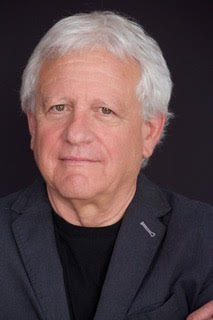Stuart Firestein, the former chair of Columbia University’s Department of Biological Sciences, is a neuroscientist who studies the olfactory system, but he’s also an expert in something else—failure. In 2015, Firestein released a book, titled Failure: Why Science Is So Successful, that places failure at the heart of the scientific process.
Firestein’s journey toward the topic of failure began while he was teaching a large cellular and molecular neurobiology lecture course at Columbia. For many years, his students were expected to read an excessively long textbook, titled Principles of Neuroscience. “It’s a book about the brain that weighs twice as much as the brain,” Firestein said.
Firestein noticed a critical gap between what students were learning in the classroom and what the researchers were doing in the lab. “[Students] must have thought that the process of science is to get a lot of facts, put them in these books, and force [students] to memorize them and spit them back up on an exam, which is a very unpleasant experience,” he said. “And that’s not true either. [Scientists] don’t accumulate facts—we accumulate questions.”
The experience led him to create a new course called “Ignorance,” which consisted of a variety of science faculty members meeting with students once a week for two hours to talk about everything they don’t know. “What’s their question?” Firestein asked. “Why did they settle on that as the important question? What are the other questions they’re ignoring while looking at this one? What are the questions this question will lead to?”
The course became very popular as students began to understand scientific research not as a quest for facts, but rather as an investigation of ignorance. This course not only inspired Firestein’s first book, Ignorance: How It Drives Science, but also served as a jumping-off place for his contemplation of the role of failure in science.
According to Firestein, failure is the best way to identify the questions that lay at the root of our scientific ignorance. “Let’s say you do an experiment, and it fails,” Firestein said. “There must be something you didn’t know when you set this up. We have to do some experiments before this experiment to figure out what it is we’re missing.” In Firestein’s view, failure is an essential part of the scientific process that reveals our ignorance in actionable ways. Failure points the finger at what we don’t know, which allows us to then turn around and ask more meaningful questions about science. “It’s a way of gaining knowledge in the same way as a successful experiment. It is no less valuable, no less important, and no less a part of the process,” Firestein said. “So, things should fail. In fact, I think they should fail at a fairly high rate.”
Despite its importance to scientific discovery, many students still struggle greatly with embracing failure. “We tend not to accept failure easily,” Firestein said. “We tend to see it as a negative.” He looks at natural failures in our environment to justify why we should be more open to failing.
“If you look at the top predators, like lions and tigers, I think most of us think that they can just go out anytime they get a little hungry and bag a snack somewhere,” Firestein said. “But that’s not actually true. When you look at the predator-prey literature, you find these big critters are successful fewer than twenty-five percent of the time they go after something. Seventy-five percent of the time, the critter escapes.” Even the top of the top encounter failures, yet they learn from them and continue to try, whether by changing their methods or trying a new approach.
Similarly, Firestein argues that accepting the natural likelihood of failures is especially important. “It is a regular part of the process,” he said. “It’s not like success and failure are two sides of a coin, but rather like two horses pulling a wagon in the same direction in their own particular way.”
This is sometimes hard to understand, especially for young scientists who have struggled with accepting their failures in the past, but it’s a key part of finding the most fascinating scientific questions. “The truth, the correct answer, is narrow,” Firestein said. “It’s just narrow, and it doesn’t go anywhere. Whereas there are endless ways to screw up, and many of them are quite interesting. They take you down new pathways. Quite often, the screw-ups are really where the data comes out.”

